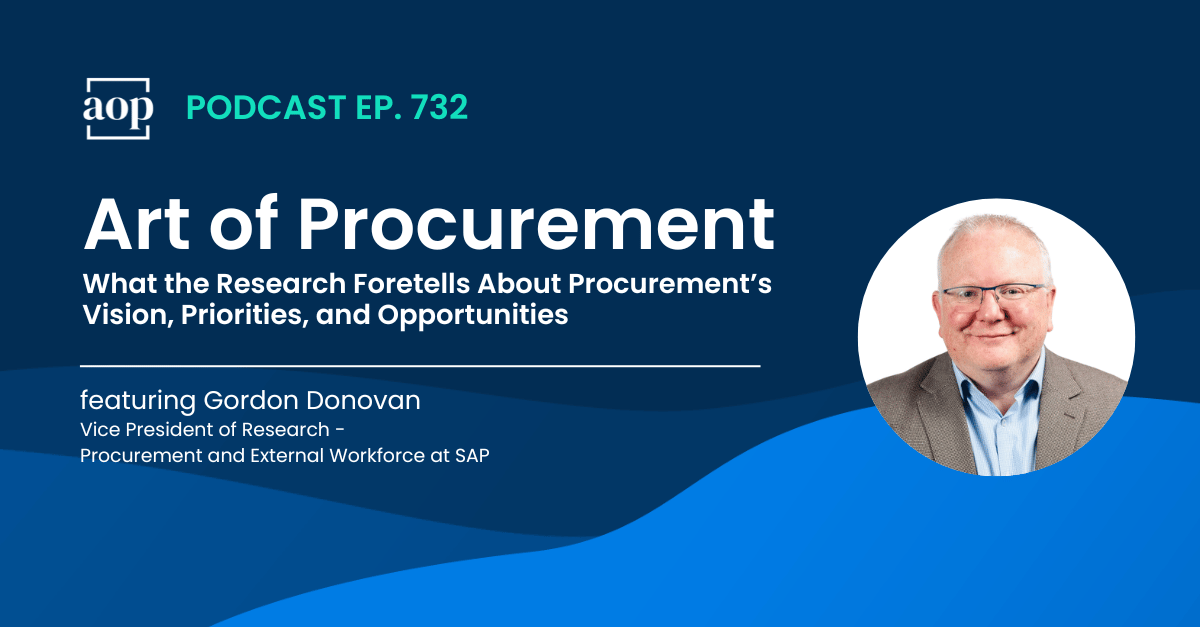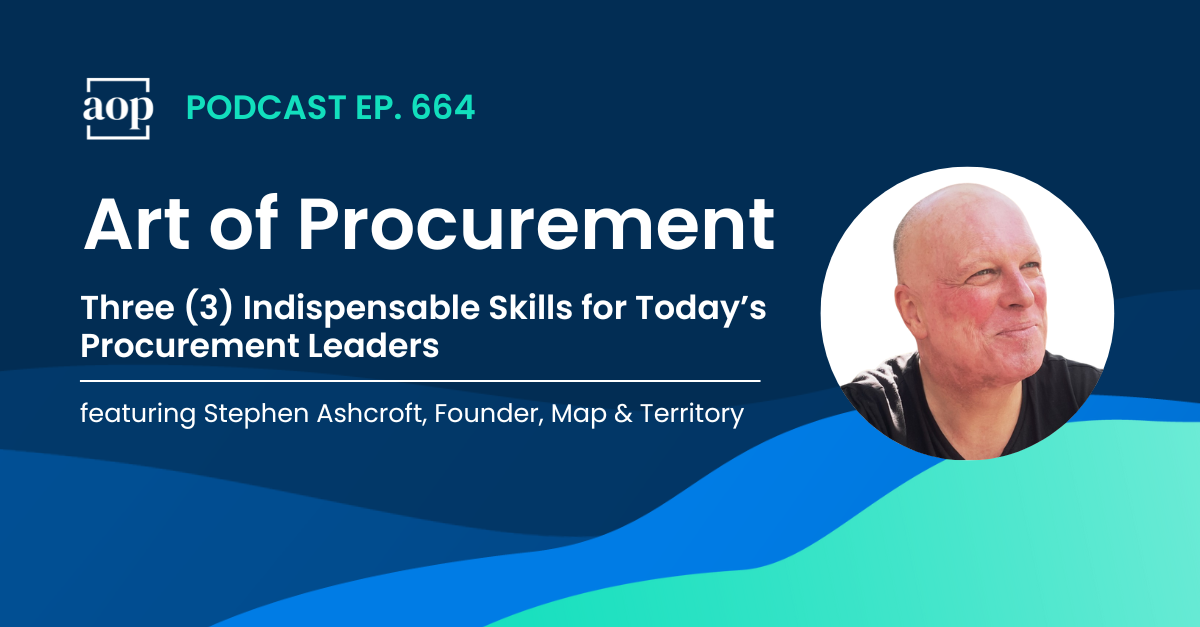“Given all the things procurement is doing, it does seem that a lot of their work tends to go unnoticed or be undervalued or is boiled down to that one bottom-line savings number. The truth is that procurement is involved with a lot.” – Vishal Patel, VP Product Marketing, Ivalua
As the saying goes, “what gets measured gets done,” but what happens when something is getting done, but it is not being measured?
According to our recent AOP Live guests Chris Sawchuk, Principal and Global Procurement Advisory Practice Leader at The Hackett Group, and Vishal Patel, Vice President of Product Marketing at Ivalua, that is the current position procurement finds themselves.
Procurement is increasingly handed more responsibility for initiatives beyond cost without being recognized, incentivized, or compensated for this growing list of contributions.
Recognizing Procurement’s Value Beyond Savings
“The elevation of corporate social responsibility has certainly elevated itself over the last several years,” said Chris. “More and more, procurement is looking for ways to report on other areas (like ESG) that are creating enablement and value for the business.”
But the problem isn’t necessarily with reporting, they say, but has more to do with the way the business recognizes and incentivizes value contribution beyond cost savings.
According to The Hackett Group’s 2023 Procurement Value Measurement Study, cost and cost avoidance are the top two areas procurement reports on to company leadership, but cost is also a key performance incentive for the procurement function and is frequently tied to things like compensation and bonuses.
On the other hand, while procurement’s contributions to ESG programs are increasingly of interest to company leadership and therefore a part of procurement’s reporting framework, procurement is often not recognized for the value they created in these areas because it exists outside of cost and bottom-line savings.
Where’s the Incentive?
Lack of direct incentives presents procurement with a value measurement problem.
“This is something I think we have to rectify within the supply management function going forward,” said Chris. “Things like ESG are being driven to the top of the organization. We’re creating much more awareness for ESG – our senior leaders want to know about it – but it’s not necessarily driving performance measurement, and it’s not a part of our incentive structure to the same degree that other initiatives are.”
While progress has been made toward including ESG in procurement’s scope of ownership and reporting structure, the way this value creation is thought of and approached within the business is ripe for improvement.
“There is often a disconnect between what the board or c-suite expects from procurement and how it’s measured or how performance is evaluated,” said Vishal. “But I think procurement is in the perfect place to do something about it.”
Time to Close the Gap
Visibility into procurement’s value contributions may be on the rise – sustainability or diversity metrics, for example, are getting more airtime on earnings calls – but closing the gap around how procurement is measured and supported for their widening scope of value creation is the obvious next step.
“There are newer areas – beyond cost – that have evolved into our portfolio of measurements,” said Chris. “Areas around diverse spend or the percentage of spend that is diverse in the organization, areas around sustainability or what we’re doing from an environmental standpoint, areas around customer satisfaction… these have all elevated themselves from a reporting standpoint.”
But, says Chris, communicating the value that procurement is bringing to all of these initiatives and then baking that into a more formal reporting and performance management framework is still a work in progress at many levels of leadership.
“I think procurement is still trying to sort out the most appropriate way to bring quantifiable and credible evidence and awareness of what is happening in our supply chains from a responsible standpoint,” said Chris.
And while many organizations are showing a growing interest in supporting this visibility and insight, there’s still plenty of room to improve how procurement’s value contribution is communicated, measured, and recognized.
Subscribe to Art of Procurement
Apple | Stitcher | iHeart Radio | Email






